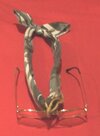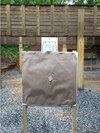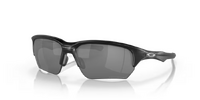chaim
Member
So, I've considered buying prescription eye protection off and on for a few years now. When I first started shooting regularly, I used non-prescription and bought the oversized eye protection that fits over glasses. I never liked them, they are bulky, they take a lot of space in my range bag, and when I realized that most (all?) ranges are fine with regular eye glasses as eye protection, I just used my daily glasses. That has the advantage of your training and range practice being as close to what you'd have on the street as possible. However, while it protects my eyes from a direct hit from a casing, sometimes in the arc they usually fall in, they fall between my glasses and my face. This happened in my last range trip (Sat). Dedicated eye protection glasses that provide protection around the lenses may be worthwhile.
So, why I'm posting here/my question...
Initially, I was thinking I'd get a single prescription lens. I used to wear bifocals and switched over to progressives ("no line bifocals") some years ago. To get glasses with the built in reading prescription is much more expensive, and I'm only going to wear these glasses for a specialized purpose (shooting). When I used to ride, my motorcycle goggles were single prescription as well for the same reason, I wasn't going to wear them day to day and didn't need the near/reading prescription built into them so I went with the cost savings. Further, I shoot best out of the distance side of my glasses, but I've had to adjust my natural shooting posture and head position because that sets the sights right at the line between my distance and near vision prescriptions. So, I may shoot better (and at a more comfortable posture) using single vision lenses. However, having everything as close to "real life" when practicing, and especially when training, is important. So, I'm considering spending the money and buying the (otherwise unnecessary) progressives for my shooting glasses so I don't need to adjust from my practice and training if I'm ever in a self defense shooting.
The question:
Should I buy the cheaper (but less effective for training purposes) single vision glasses, or get the (otherwise unnecessary and more expensive) progressive lenses so my shooting glasses and training is as close to my real life glasses as possible?
I'm leaning towards ponying up the extra money, having the less comfortable posture in training and practice, but have training and practice that more easily transfers should I find myself in a defensive shooting.
So, why I'm posting here/my question...
Initially, I was thinking I'd get a single prescription lens. I used to wear bifocals and switched over to progressives ("no line bifocals") some years ago. To get glasses with the built in reading prescription is much more expensive, and I'm only going to wear these glasses for a specialized purpose (shooting). When I used to ride, my motorcycle goggles were single prescription as well for the same reason, I wasn't going to wear them day to day and didn't need the near/reading prescription built into them so I went with the cost savings. Further, I shoot best out of the distance side of my glasses, but I've had to adjust my natural shooting posture and head position because that sets the sights right at the line between my distance and near vision prescriptions. So, I may shoot better (and at a more comfortable posture) using single vision lenses. However, having everything as close to "real life" when practicing, and especially when training, is important. So, I'm considering spending the money and buying the (otherwise unnecessary) progressives for my shooting glasses so I don't need to adjust from my practice and training if I'm ever in a self defense shooting.
The question:
Should I buy the cheaper (but less effective for training purposes) single vision glasses, or get the (otherwise unnecessary and more expensive) progressive lenses so my shooting glasses and training is as close to my real life glasses as possible?
I'm leaning towards ponying up the extra money, having the less comfortable posture in training and practice, but have training and practice that more easily transfers should I find myself in a defensive shooting.
Last edited:











